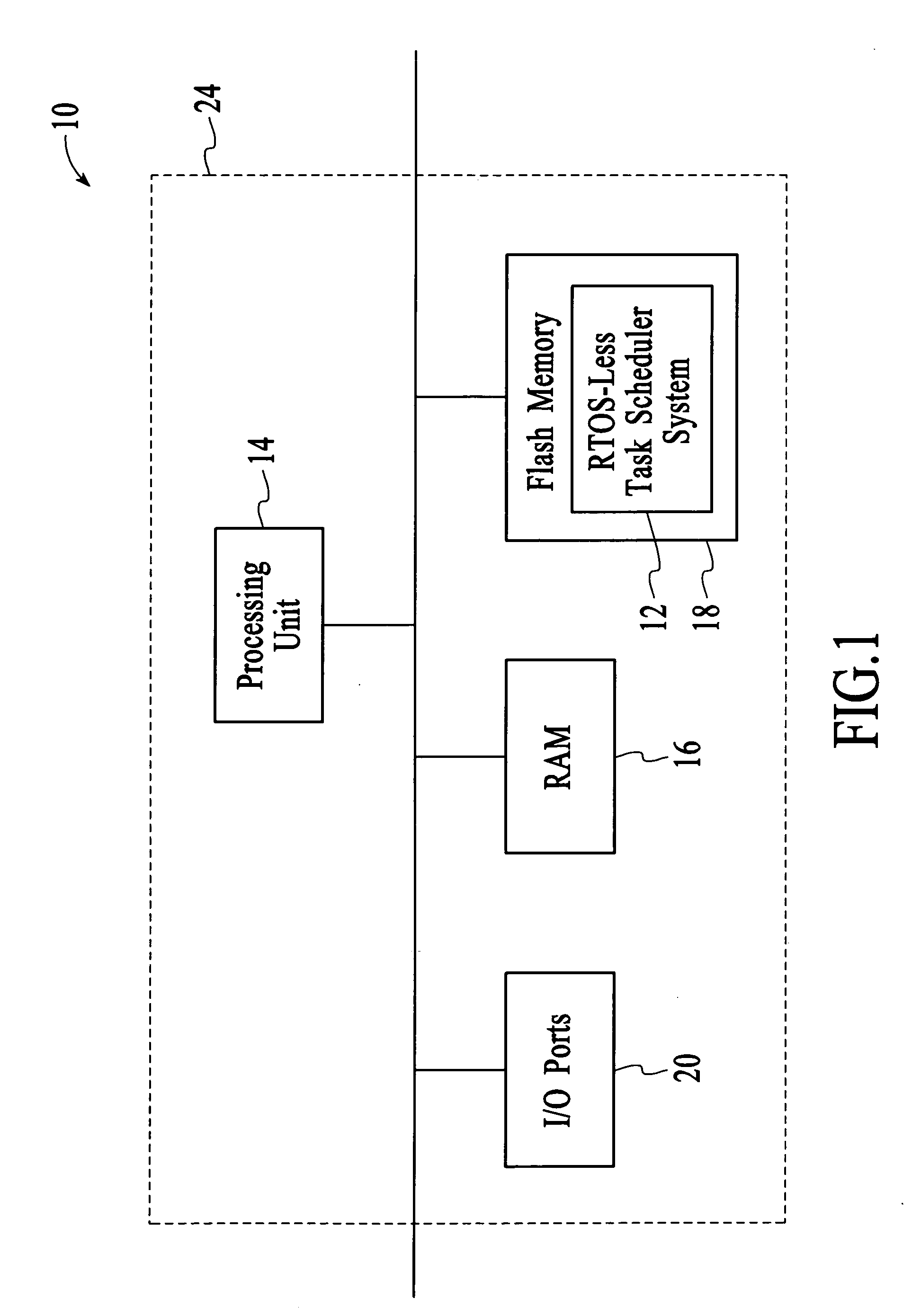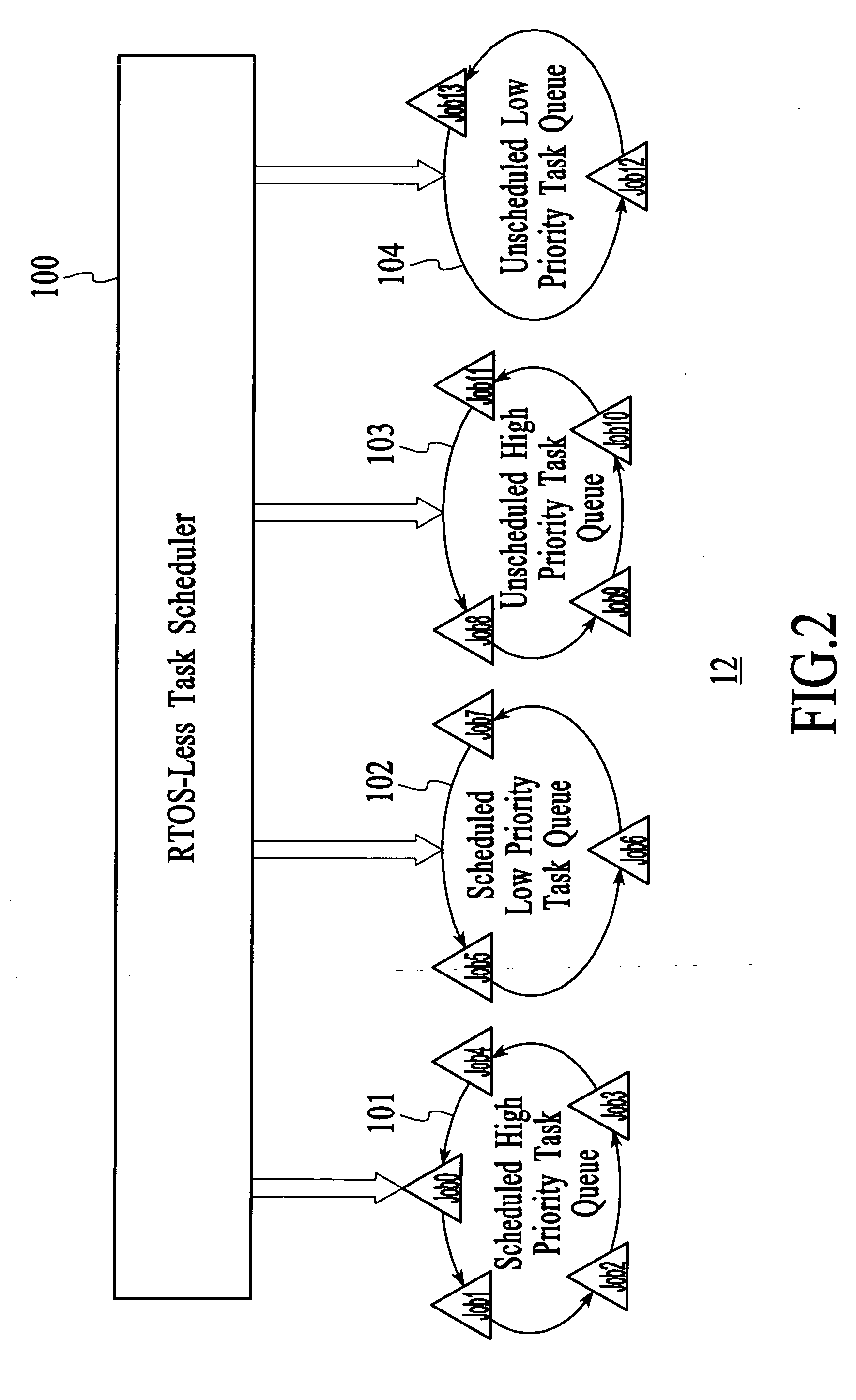Task scheduler system and method for managing tasks in an embedded system without a real time operating system
a task scheduler and embedded system technology, applied in the field of task scheduler system and method for managing tasks in embedded systems without real time operating systems, can solve the problems of numerous embedded systems with limited memory space, large storage memory and random access memory of the rtos on which a conventional task scheduler runs, and high cos
- Summary
- Abstract
- Description
- Claims
- Application Information
AI Technical Summary
Benefits of technology
Problems solved by technology
Method used
Image
Examples
Embodiment Construction
[0014] With reference to FIG. 1, an embedded system 10 without a Real Time Operating System (RTOS) in accordance with an embodiment of the invention is described. FIG. 1 is a block diagram of the embedded system 10. The embedded system 10 may be included in any product that requires a computer system to perform different tasks associated with the operation of the product. As an example, the embedded system 10 may be included in household appliances, toys, telephones, network components and electronic automotive components. As described in more detail below, the embedded system 10 includes a RTOS-less task scheduler system 12, which does not require to run on a RTOS as conventional task scheduler systems. Thus, the RTOS-less task scheduler system 12 is not dependent on a RTOS.
[0015] As shown in FIG. 1, the embedded system 10 includes a processing unit 14, a random access memory (RAM) 16, a flash memory 18, and input / output ports 20. The processing unit 14 is a central processing uni...
PUM
 Login to View More
Login to View More Abstract
Description
Claims
Application Information
 Login to View More
Login to View More - R&D
- Intellectual Property
- Life Sciences
- Materials
- Tech Scout
- Unparalleled Data Quality
- Higher Quality Content
- 60% Fewer Hallucinations
Browse by: Latest US Patents, China's latest patents, Technical Efficacy Thesaurus, Application Domain, Technology Topic, Popular Technical Reports.
© 2025 PatSnap. All rights reserved.Legal|Privacy policy|Modern Slavery Act Transparency Statement|Sitemap|About US| Contact US: help@patsnap.com



